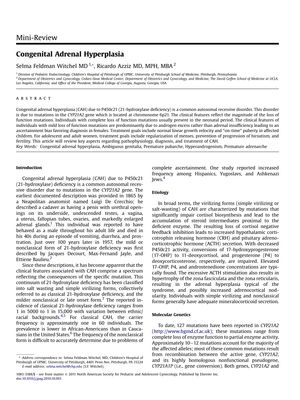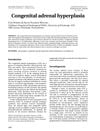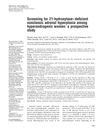Congenital Adrenal Hyperplasia: Comprehensive Overview and Clinical Management
May 2011
in “
Journal of Pediatric and Adolescent Gynecology
”

TLDR The document concludes that proper diagnosis and a multidisciplinary approach are crucial for managing Congenital Adrenal Hyperplasia effectively.
The document from 2011 provides a comprehensive overview of Congenital Adrenal Hyperplasia (CAH), an autosomal recessive disorder caused by mutations in the CYP21A2 gene, leading to a spectrum of clinical features due to androgen excess. It discusses the clinical manifestations, which range from ambiguous genitalia in newborns to hyperandrogenic symptoms like hirsutism, acne, alopecia, anovulation, and menstrual dysfunction in adolescents and adults. The incidence of classical CAH is noted to be between 1 in 5,000 to 1 in 15,000 births, with a carrier frequency of 1 in 60 individuals. The document emphasizes the importance of accurate diagnosis through tests like morning 17-OHP concentrations and acute ACTH stimulation tests, and it outlines treatment goals that include normal growth and puberty in children, regular menstruation, fertility, and prevention of hirsutism and acne in women. It also addresses the challenges of transitioning from pediatric to adult care and the need for a multidisciplinary approach within a medical home framework to improve outcomes for individuals with CAH.




